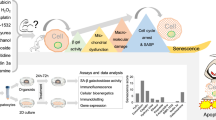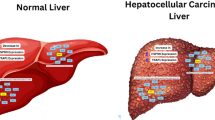Abstract
Mutations in the gene encoding hepatocystin/80 K-H (PRKCSH) cause autosomal dominant polycystic liver disease. Hepatocystin deficiency impairs glucosidase II activity, which is critical for processing and folding glycoproteins in the endoplasmic reticulum (ER). Hypoxia is known as a strong stimulus for generating survival signals in hepatocellular carcinoma (HCC) cells. However, hypoxia may induce cell apoptosis under conditions of severe ER stress. Thus, we hypothesized that suppression of hepatocystin transcription induces HCC cell death under hypoxic conditions due to excessive ER stress. A new human HCC cell line, SNU-3058, was established following primary culture of tumor cells harvested from a Korean patient with rapidly growing hypovascular HCC. In cell culture, human HCC cells (Huh-7, SNU-761, and SNU-3058) were treated with control siRNA or hepatocystin siRNA with or without doxorubicin under hypoxic conditions. Cell viability, ER stress, unfolded protein response (UPR), and apoptosis were assessed using the MTS assay, immunoblot assay, and RT-PCR. Suppression of hepatocystin transcription attenuated proliferation in Huh-7 and SNU-761 cells, while proliferation was amplified in SNU-3058 cells. Similar results were observed following treatment with doxorubicin. Hepatocystin siRNA transfection increased cell death in Huh-7 and decreased cell death in SNU-3058. In SNU-3058, hepatocystin siRNA amplified GRP78, known as a pro-survival and cyto-protective signal, and attenuated the pro-apoptotic signal CHOP. These findings suggest that suppression of hepatocystin transcription induce the UPR, which alleviates damage associated with ER stress in SNU-3058. UPR had a limited role in protecting SNU-761 cells, resulting in cell death through apoptosis. In addition, blocking of pro-survival UPR signal by bacitracin or GRP78 knockdown, attenuated hepatocystin siRNA-induced proliferation in SNU-3058 cells under hypoxia. In this study, we demonstrated that different sensitivities to hepatocystin siRNA among human HCC cell lines are dependent on appropriate UPRs to hypoxia-induced ER stress following hepatocystin siRNA transfection. Because UPR is the main evasive mechanism for apoptosis induced by suppression of hepatocystin, targeting hepatocystin via UPR suppression could be a strategy for treating HCC.





Similar content being viewed by others
References
Al-Rawashdeh FY, Scriven P, Cameron IC, Vergani PV, Wyld L (2010) Unfolded protein response activation contributes to chemoresistance in hepatocellular carcinoma. Eur J Gastroenterol Hepatol 22:1099–1105
Backer MV, Backer JM, Chinnaiyan P (2011) Targeting the unfolded protein response in cancer therapy. Methods Enzymol 491:37–56
Drenth JP, te Morsche RH, Smink R, Bonifacino JS, Jansen JB (2003) Germline mutations in PRKCSH are associated with autosomal dominant polycystic liver disease. Nat Genet 33:345–347
Dupuy E, Hainaud P, Villemain A, Bodevin-Phedre E, Brouland JP, Briand P, Tobelem G (2003) Tumoral angiogenesis and tissue factor expression during hepatocellular carcinoma progression in a transgenic mouse model. J Hepatol 38:793–802
Gwak GY, Yoon JH, Kim KM, Lee HS, Chung JW, Gores GJ (2005) Hypoxia stimulates proliferation of human hepatoma cells through the induction of hexokinase II expression. J Hepatol 42:358–364
Hirai M, Shimizu N (1990) Purification of two distinct proteins of approximate Mr 80,000 from human epithelial cells and identification as proper substrates for protein kinase C. Biochem J 270:583–589
Janssen MJ, Waanders E, Woudenberg J, Lefeber DJ, Drenth JP (2010) Congenital disorders of glycosylation in hepatology: the example of polycystic liver disease. J Hepatol 52:432–440
Lee JH, JL K, Park YJ, Lee KU, Kim WH, Park JG (1999) Establishment and characterization of four human hepatocellular carcinoma cell lines containing hepatitis B virus DNA. World J Gastroenterol 5:289–295
Nakabayashi H, Taketa K, Miyano K, Yamane T, Sato J (1982) Growth of human hepatoma cells lines with differentiated functions in chemically defined medium. Cancer Res 42:3858–3863
Ron D, Walter P (2007) Signal integration in the endoplasmic reticulum unfolded protein response. Nat Rev Mol Cell Biol 8:519–529
Scull CM, Tabas I (2011) Mechanisms of ER stress-induced apoptosis in atherosclerosis. Arterioscler Thromb Vasc Biol 31:2792–2797
Shuda M, Kondoh N, Imazeki N, Tanaka K, Okada T, Mori K, Hada A, et al. (2003) Activation of the ATF6, XBP1 and grp78 genes in human hepatocellular carcinoma: a possible involvement of the ER stress pathway in hepatocarcinogenesis. J Hepatol 38:605–614
SJ Y, Won JK, Ryu HS, Choi WM, Cho H, Cho EJ, Lee JH, et al. (2014) A novel prognostic factor for hepatocellular carcinoma: protein disulfide isomerase. Korean J Intern Med 29:580–587
Stoeltzing O, Ahmad SA, Liu W, McCarty MF, Wey JS, Parikh AA, Fan F, et al. (2003) Angiopoietin-1 inhibits vascular permeability, angiogenesis, and growth of hepatic colon cancer tumors. Cancer Res 63:3370–3377
Szegezdi E, Logue SE, Gorman AM, Samali A (2006) Mediators of endoplasmic reticulum stress-induced apoptosis. EMBO Rep 7:880–885
Waanders E, Croes HJ, Maass CN, te Morsche RH, van Geffen HJ, van Krieken JH, Fransen JA, et al. (2008) Cysts of PRKCSH mutated polycystic liver disease patients lack hepatocystin but express Sec63p. Histochem Cell Biol 129:301–310
Walter P, Ron D (2011) The unfolded protein response: from stress pathway to homeostatic regulation. Science 334:1081–1086
Wang S, Kaufman RJ (2012) The impact of the unfolded protein response on human disease. J Cell Biol 197:857–867
XZ W, Xie GR, Chen D (2007) Hypoxia and hepatocellular carcinoma: the therapeutic target for hepatocellular carcinoma. J Gastroenterol Hepatol 22:1178–1182
Yang J, Zhao Y, Ma K, Jiang FJ, Liao W, Zhang P, Zhou J, et al. (2011) Deficiency of hepatocystin induces autophagy through an mTOR-dependent pathway. Autophagy 7:748–759
Yeung YP, Lo CM, Liu CL, Wong BC, Fan ST, Wong J (2005) Natural history of untreated nonsurgical hepatocellular carcinoma. Am J Gastroenterol 100:1995–2004
Author information
Authors and Affiliations
Corresponding author
Ethics declarations
Conflict of interest
No conflicts of interest to declare.
Rights and permissions
About this article
Cite this article
Yoo, JJ., Lee, D.H., Cho, Y. et al. Differential sensitivity of hepatocellular carcinoma cells to suppression of hepatocystin transcription under hypoxic conditions. J Bioenerg Biomembr 48, 581–590 (2016). https://doi.org/10.1007/s10863-016-9677-5
Received:
Accepted:
Published:
Issue Date:
DOI: https://doi.org/10.1007/s10863-016-9677-5




